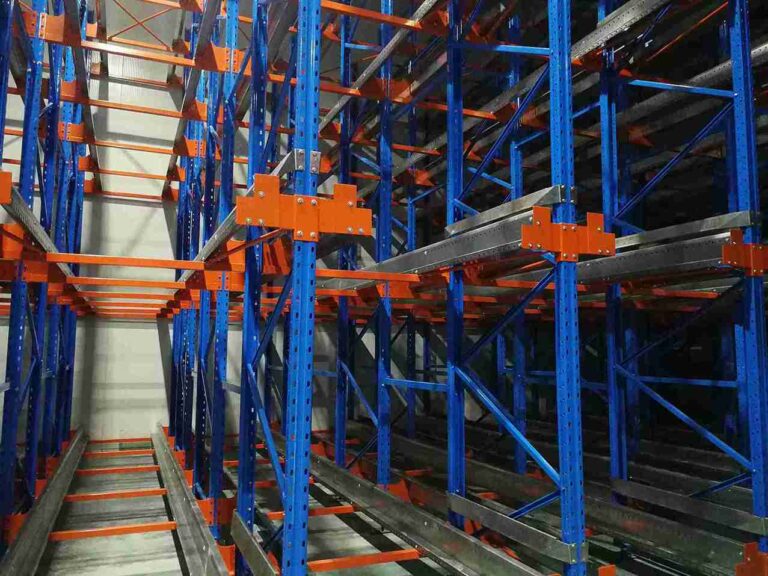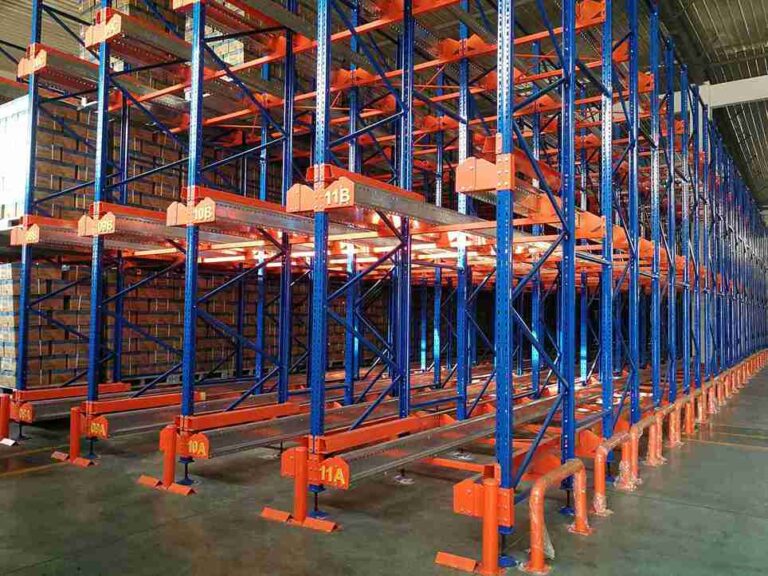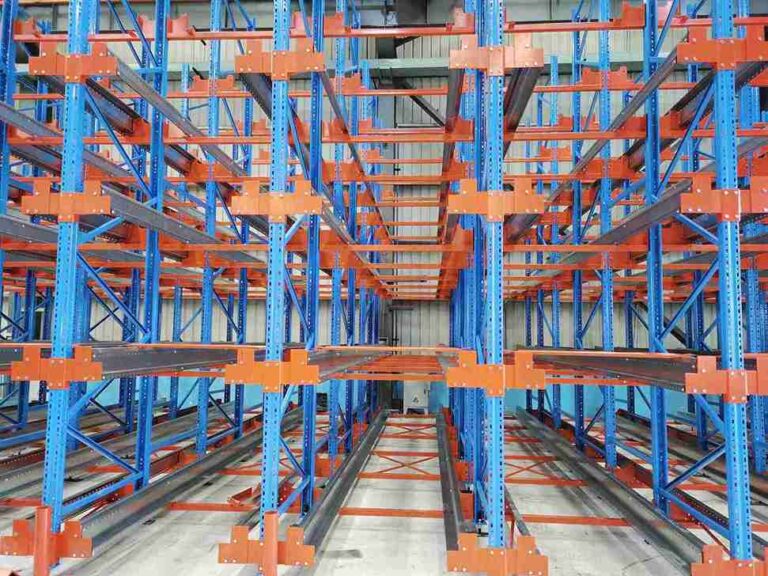📐 "First 50 Enterprise Queries Get Custom 3D Warehouse Design" Plan

Effective shuttle racking financial planning is the backbone of a successful warehouse automation strategy. Companies investing in shuttle racking systems must carefully evaluate costs, ROI, and long-term operational benefits to ensure maximum efficiency and profitability. This in-depth guide explores every aspect of financial planning for shuttle racking, from initial budgeting to long-term savings, helping businesses make data-driven decisions.

1. Why Shuttle Racking Financial Planning Matters
1.1 The Growing Demand for Automated Storage Solutions
With rising labor costs and shrinking warehouse space, shuttle racking financial planning has become essential for businesses looking to optimize storage density and reduce operational expenses.
1.2 Key Financial Advantages of Shuttle Racking Systems
- 50-70% higher storage density compared to traditional racking
- 30-50% labor cost reduction due to automation
- Faster inventory turnover, reducing holding costs
2. Cost Components of Shuttle Racking Financial Planning
2.1 Upfront Investment Breakdown
A well-structured shuttle racking financial plan must account for:
- Shuttle vehicles (50K per unit)
- Racking structure (150 per pallet position)
- Software & automation controls (50K)
- Installation & training (100K+)
2.2 Hidden Costs in Shuttle Racking Financial Planning
Many businesses overlook:
- Electrical upgrades for automated systems
- Ongoing software licensing fees
- Preventive maintenance contracts (5-10% of initial cost annually)
3. Budgeting Strategies for Shuttle Racking Financial Planning
3.1 Assessing Warehouse Needs Before Investing
- Current pallet volume vs. future growth projections
- Peak season storage demands
- Compatibility with existing warehouse workflows
3.2 Financing Options for Shuttle Racking Systems
- Outright purchase (best for long-term ROI)
- Leasing (preserves capital, tax benefits)
- Equipment financing loans (flexible repayment terms)
3.3 Cost-Saving Tips in Shuttle Racking Financial Planning
- Phased implementation to spread costs
- Bulk purchasing discounts from suppliers
- Government grants for automation adoption
4. Calculating ROI in Shuttle Racking Financial Planning
4.1 The Standard ROI Formula for Shuttle Racking
ROI (%) = [(Annual Savings – Initial Cost) / Initial Cost] × 100
4.2 Real-World ROI Case Study
| Metric | Savings |
|---|---|
| Labor cost reduction | $120,000/year |
| Space optimization savings | $60,000/year |
| Reduced inventory loss | $30,000/year |
| Total annual savings | $210,000 |
| Payback period (on $500K investment) | ~2.4 years |
5. Comparing Shuttle Racking to Alternative Systems
5.1 Shuttle vs. Selective Racking: Financial Impact
| Factor | Shuttle Racking | Selective Racking |
|---|---|---|
| Storage density | 50-70% higher | Lower |
| Labor efficiency | High automation | Manual handling |
| Long-term cost | Lower operational expenses | Higher labor dependency |
5.2 Shuttle vs. AS/RS: Which Offers Better Financial Value?
- AS/RS = 3-5x more expensive, ideal for ultra-high-speed operations
- Shuttle racking = Best cost-to-performance ratio for mid-sized warehouses
6. Best Practices for Optimizing Shuttle Racking Financial Planning
6.1 Choosing the Right Supplier for Maximum ROI
- Look for proven industry experience (10+ years preferred)
- Demand detailed cost breakdowns (avoid hidden fees)
- Check client testimonials & case studies
6.2 Future-Proofing Your Investment
- Scalable designs (can the system grow with your business?)
- Software upgradeability (AI integration, IoT compatibility)
6.3 Maintenance & Longevity Considerations
- Preventive maintenance schedules (extends lifespan to 15-20 years)
- Spare parts inventory management (reduces downtime costs)
7. Common Financial Pitfalls in Shuttle Racking Planning
7.1 Underestimating Installation Complexity
- Floor reinforcement requirements
- Electrical infrastructure upgrades
7.2 Ignoring Software Integration Costs
- WMS compatibility testing
- Staff training expenses
7.3 Overlooking Energy Consumption
- Electric vs. battery-powered shuttles (impact on utility bills)
8. Future Trends Impacting Shuttle Racking Financial Planning
8.1 AI-Driven Optimization for Cost Savings
- Predictive maintenance reduces repair costs
- Dynamic storage algorithms maximize space utilization
8.2 Sustainability & Energy Efficiency
- Solar-powered shuttle systems (cutting energy costs)
- Regenerative braking technology in newer models
9. Case Study: How a 3PL Company Slashed Costs with Shuttle Racking
A leading logistics provider implemented a shuttle racking system after thorough financial planning, achieving:
- 40% reduction in labor costs
- 60% increase in storage capacity
- Full ROI in 2.7 years
10. Conclusion: Mastering Shuttle Racking Financial Planning
A well-executed shuttle racking financial plan transforms warehouse operations by reducing costs, boosting efficiency, and future-proofing storage infrastructure. Businesses that invest time in detailed cost analysis, ROI projections, and supplier vetting gain a competitive edge in logistics automation.
FAQs on Shuttle Racking Financial Planning
1. What’s the average lifespan of a shuttle racking system?
With proper maintenance, 15-20 years, making it a highly durable investment.
2. Can shuttle racking handle mixed pallet sizes?
Yes, but custom configurations may increase initial costs.
3. How does shuttle racking reduce labor costs?
By automating pallet movement, it cuts forklift operator expenses by 30-50%.
4. What’s the typical lead time for installation?
8-12 weeks, depending on warehouse preparation requirements.
5. Are there financing options for shuttle racking systems?
Yes, leasing, loans, and government incentives are widely available.
Welcome to contact us, if you need warehouse rack CAD drawings. We can provide you with warehouse rack planning and design for free. Our email address is: jili@geelyracks.com




